When film director and producer Doug Liman was a child, he discovered an old puzzle map of Wales at a yard sale and gave it to his parents. His mother, artist Ellen Liman, was intrigued by the artwork, while his father, Arthur, was curious about the puzzle’s place in cultural history.
That single game led the couple to create a collection of their own. A collection that grew to over 500 board games.
In 2000, the couple donated the collection to the New York Historical Society. Just two years later, the Society opened a special exhibit of 200 games from the collection. The games curated for display were produced from 1840 to 1920 and offered a glimpse into the gaming diversions of the up-and-coming American middle class of the era.
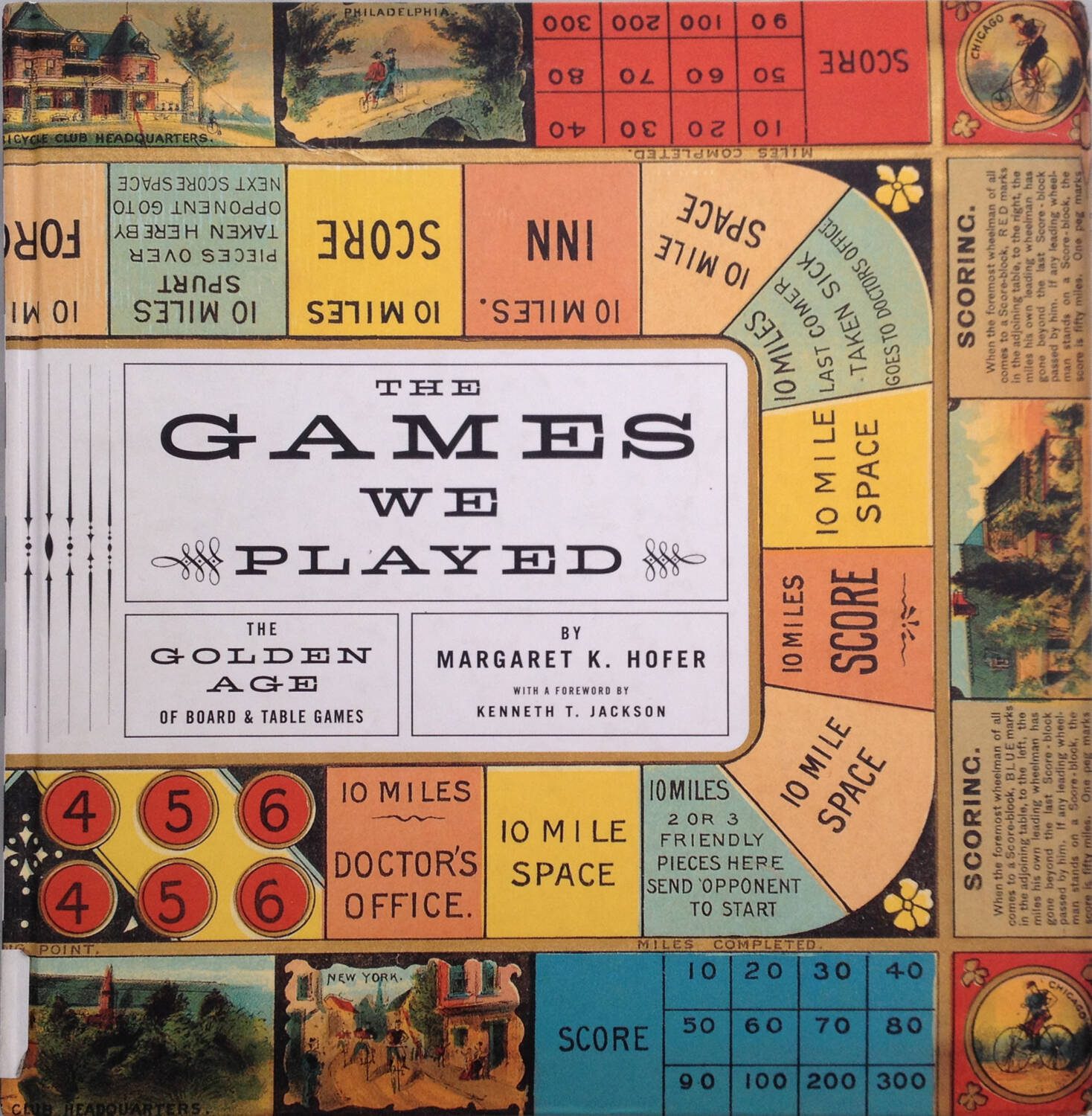
The Games We Played: The Golden Age of Board & Table Games by Margaret Hofer (Princeton Architectural Press, 2003) is the book inspired by that exhibit. At 11” x 11”, and in full color, it was likely intended to be a ‘coffee table’ book. For me, however, it is much more than that. As someone intrigued by the history of board games, this book is a fascinating visual history of our hobby.
The book divides the illustrated games into rough headings, with each chapter providing a loose framework for the games described.
The first chapter, Parlor Amusements, shows box artwork and cards for a variety of simple card and letter games, including Mother Goose’s Party or the Merry Game of Old Maid (McLoughlin Brothers, 1887) and The Premium Game Logomachy, or War of
Words. (McLoughlin Brothers, 1889) Also included are various conversation starters like The Sociable Telephone: A Game for the Smart Set (J. Ottoman LIth Co., 1902) and
fortune telling games such as Chronomagica (McLoughlin Brothers, 1870).
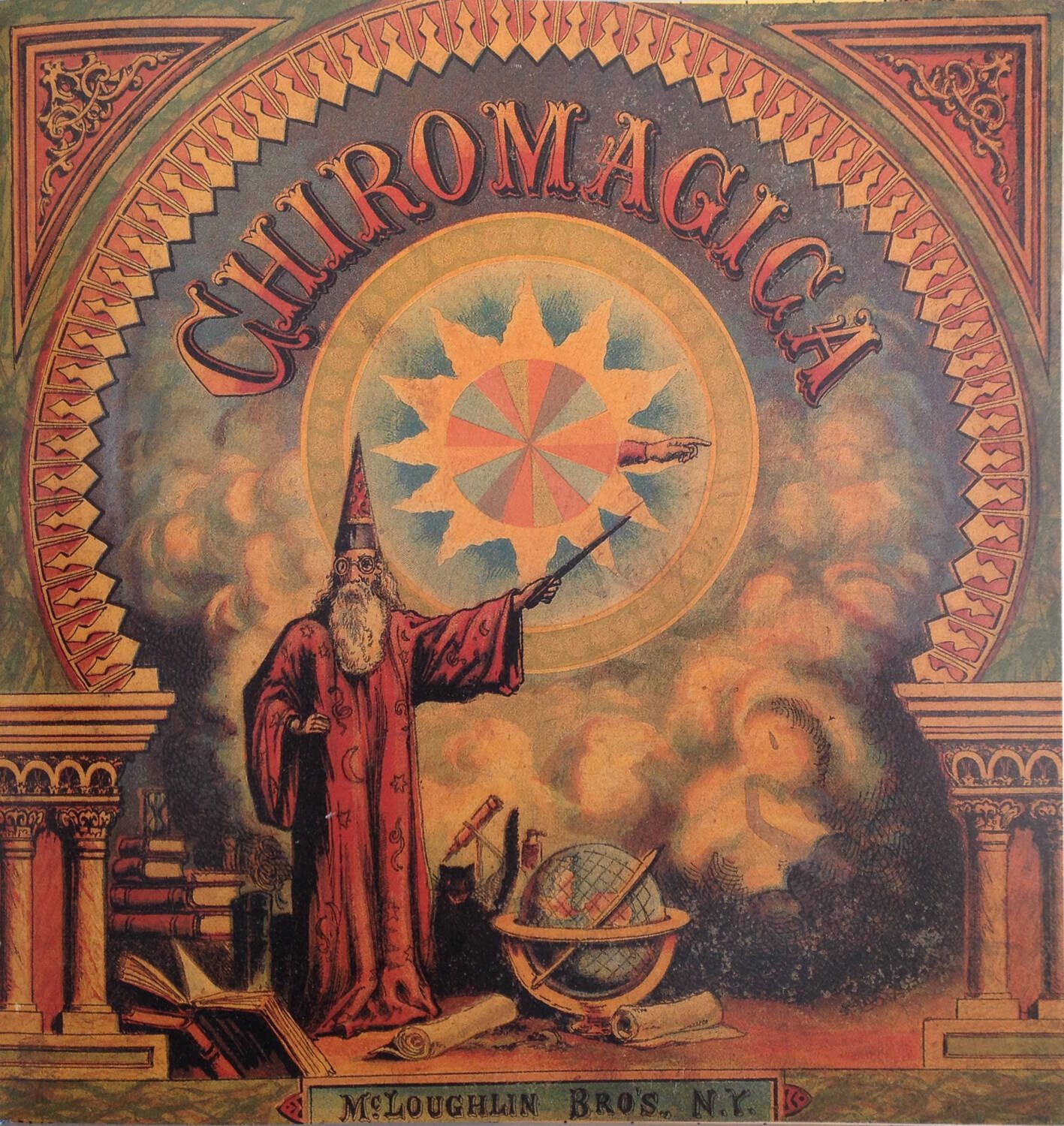
Of particular interest is a game called Mixed Pickles (Selchow & Righter, 1890) which involves matching three cards with assorted sentence parts that, when combined, the game promises to keep players “convulsed with laughter at the ludicrous combination of sentences.” (Sound familiar?)
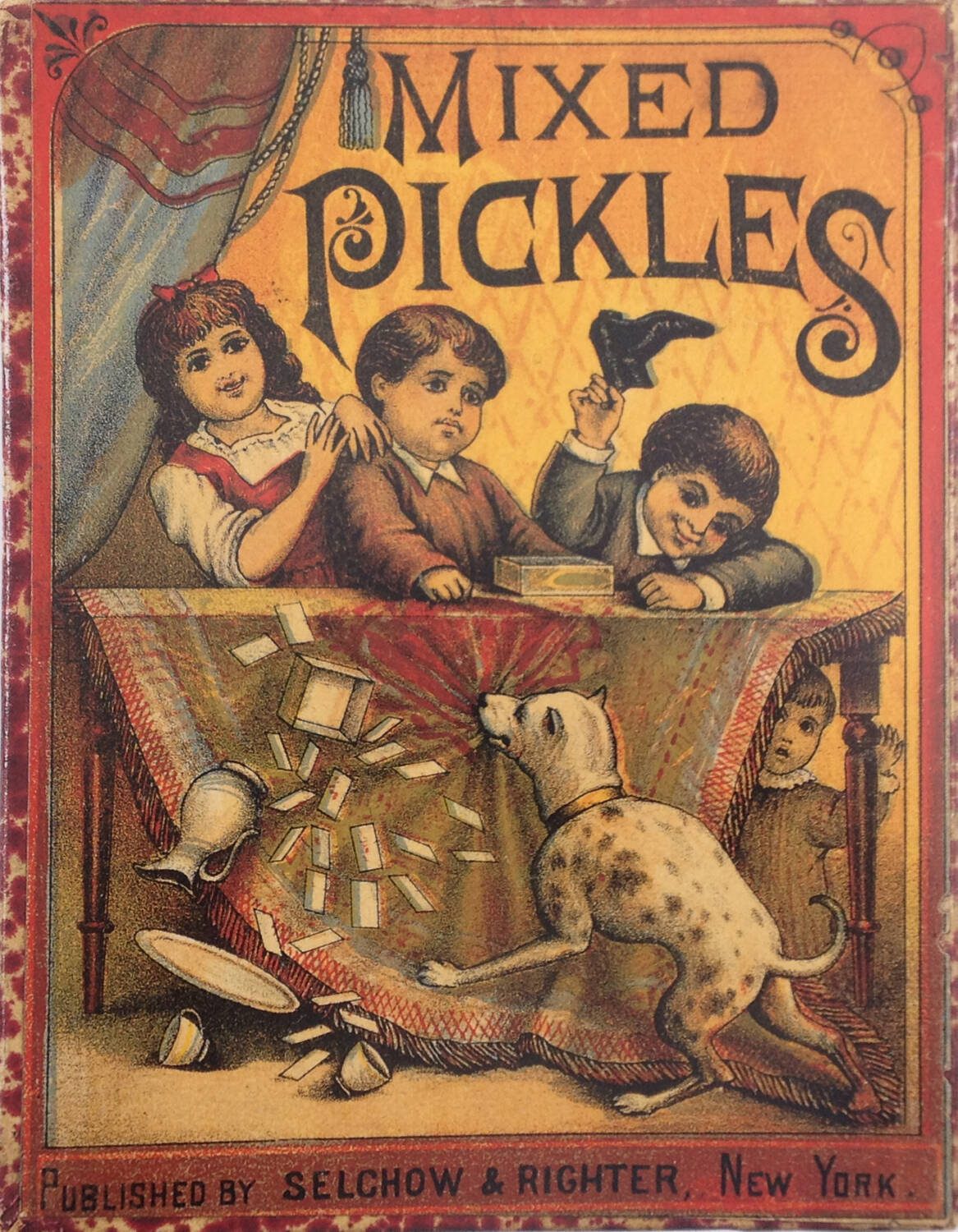
The next chapter, The World’s Educator, shows examples of alphabet spelling blocks, quiz games on history, geography, the Bible, and famous people. It also includes some of the very first mass produced games tied to children’s literature, including Little Goldenlocks and the Three Bears: A Pleasing Game (McLoughlin Brothers, 1890)
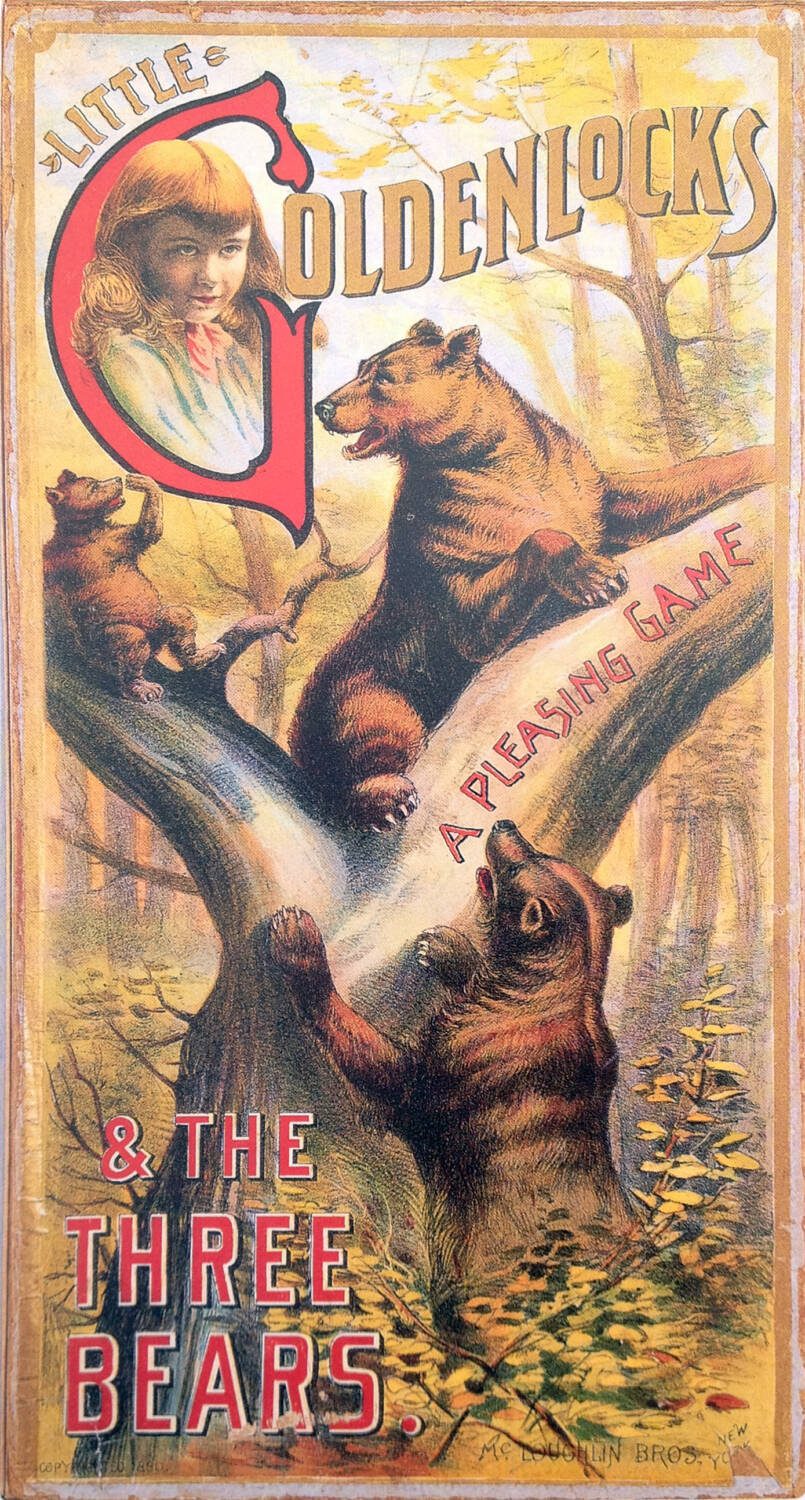
and Jack the Giant Killer (McLoughlin Brothers, 1890).

Each of these folktale-themed games were simple Roll and Move games, with the Peter Peter… game featuring many tangential circles rather than the standard single loop around the board.
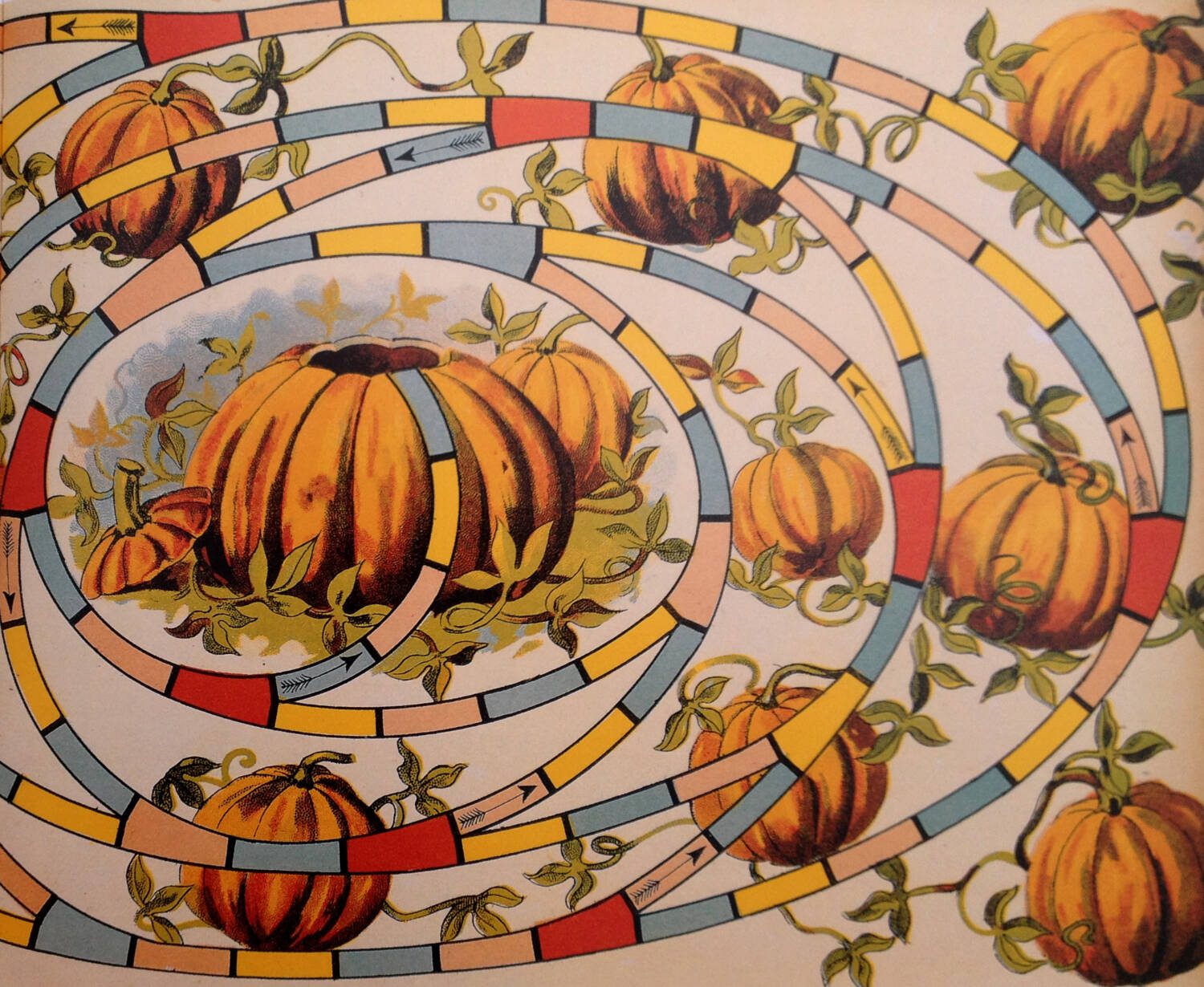
Morals and Materialism provides some fine examples of the mid-to-late Nineteenth Century views on how hard work and “virtuous Christian living” were the models for success in American society. The earliest such example is The Mansion of Happiness (1843 with numerous editions by equally numerous companies). A 1864 board allows player to advance when landing on such spaces as “Justice”, “Honesty”, “Temperance” and “Humility” while they lose ground if they land on “Poverty”, “Idleness”, “A Perjurer”, or “Ingratitude.”
The Checkered Game of Life (Milton Bradley, 1866) has a similar theme but is played on a checkers-like board with players moving through the stages of life. Players move forward if they land on tiles like “Bravery to Honor” and “Honesty to Happiness” while they’re sent back on squares that read “Ambition to Fame”, “Crime to Prison”, or “Politics to Congress.” The Checkered Game of Life is also noteworthy for introducing a point scoring mechanism to the Roll and Move nature of the game. Here, the person who finishes with the most points is the winner.
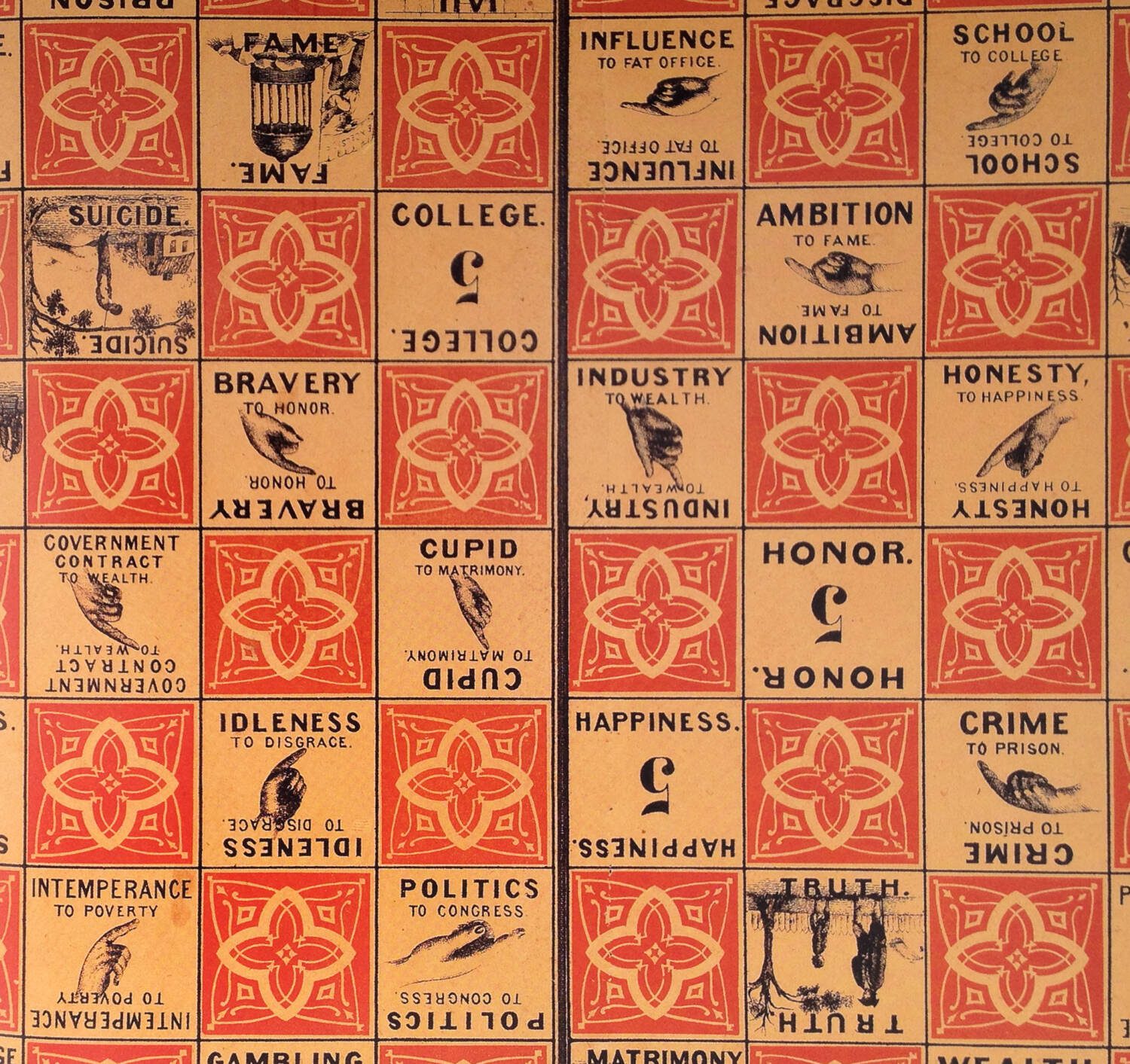
For fans of the continually reprinted game of Pit (Parker Brothers, 1904) there are examples of the original cards used to represent Wheat, Oats, and the Bear, as well as the original card backing graphic.
The brief chapter on War Games shows examples of games such as Game of War at Sea or Don’t Give Up the Ship (McLoughlin Brothers, 1898) where players try to rid the
Spanish-American War era seas of their opponent’s ships. Also shown are two trivia quiz-like games, Schley at Santiago Bay and Roosevelt at San Juan. (both Chafee & Selchow, 1899) Also included, oddly, are some ten pin-like bowling games featuring cardboard cutouts featuring cowboys/cowgirls and indians; Teddy Roosevelt’s Rough Riders; and soldiers.
Parlor Athletics collects board games that promise to bring sporting activities to the parlor room table. Game of Baseball (McLoughlin Brothers, 1886), The Game of Basket Ball, which features two all-girl teams (Chaffee & Selchow and McLoughlin Brothers, 1898), and The Game of Golf, whose box is illustrated with three cherub-like tots in long dresses, curled locks, and tiny golf clubs in their hands. (McLoughlin Brothers, 1866) (The Game of Golf board shows a helter-skelter board of numbered ‘holes’ connected by multiple paths of red and/or blue dots suggesting that it was a Race game.)
The front and back cover images of The Games We Played is a replica of the board from Game of Bicycle Race (McLoughlin Brothers, 1895). Up to four players moved by spinning a special cardboard spinner and advancing on the board, completing enough laps to accumulate the agreed upon winning number of miles.
In 1896, Parker Brothers introduced Pillow-Dex, a game that came with a cord and some balloons. The cord was stretched lengthwise along a table and served as the top of the net that players needed to bat a pear-shaped balloon over. The box promised that “The Exciting and Laughable New Game” was “Fun for All Ages” and apparently it was—the following year Parker Brothers introduced Pillow-Dex Tennis. This version came with the same pear-shaped balloons but added a webbed net that could be supported by two parlor chairs and a pair of rackets. (“Helpful Fun for Indoors or Outdoors”)
Tiddledy Winks was patented in England in 1889 and very popular with American game players. The Improved Game of Tiddledy Winks (McLoughlin Brothers, 1890) and The Popular Game of Tiddledy Winks (Parker Brothers, 1897) also made it into the Limen Collection.
At the turn of the century, as people were leaving the farm for life in the city, board games began following the public’s lead. The chapter, Urban Experience, leads with games that feature a stylized map of lower Manhattan (The Post Office Game, Parker Brothers, 1897) and a cross-country trip from New York to San Francisco with big city stops along the way. (The Game of Phoebe Snow, McLoughlin Brothers, 1909)
The dichotomy of urban versus rural experiences was featured in the game Peter Coddle’s Trip to New York (Milton Bradley, circa 1890). In this precursor to the modern-day Mad Libs, one player read aloud a paragraph while other players read from strips of paper to fill in blanks in the sentences, hopefully with comedic effect.

The book ends with a very brief chapter titled ‘Round the World that features several race games including Game of Race Around the World (McLoughlin Brothers, 1898), Game of To the North Pole by Airship (McLoughlin Brothers, 1897), The Amusing Game of Innocence Abroad (Parker Brothers, circa 1888), and ‘Round the World with Nelly Bly (McLoughlin Brothers, 1890).

There are, however, several likely intentional absences in The Games We Played. Racism, which was rampant during these years, is only shown in two games. Many of the games included here are represented only by the box that held the game, with the game board not shown. Only one board had the accompanying game rules included (Jerome Park Steeple Chase (McLoughlin Brothers, circa 1885) and that’s because they were printed in the open space at the center of the race track. Given the layouts of many of the boards shown it’s safe to guess that most were racing games with a roll & move mechanic, but I still wished I could have understood how these games were played.
This is a book where the game boards and the box cover art is given the attention they deserve. Occasionally, box covers or game boards take up an entire page to show off the detail of the work.
Describing what is, essentially, a coffee-table book of photographs and only being able to show a few examples of those images is a difficult task at best. Should the subject matter appeal to you at all, or if the names of some of these games piqued your curiosity, I hope you will seek out The Games We Played. I suspect you’ll be happy you did.




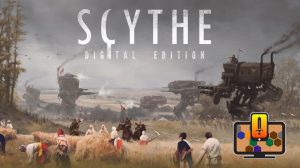
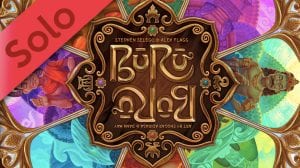
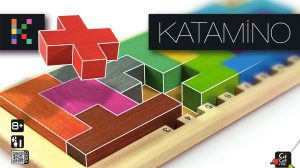




Add Comment